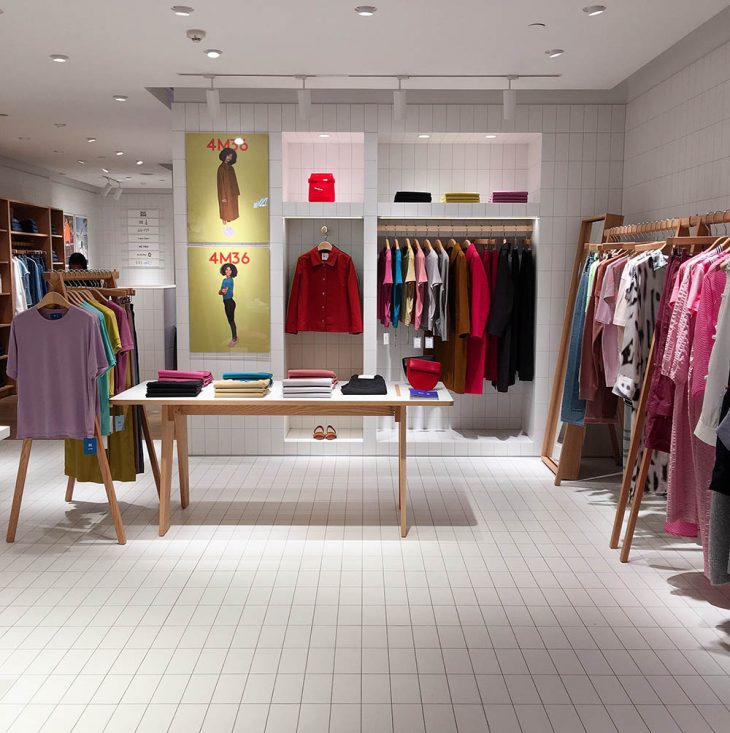
Considering the fact that the global apparel market is projected to grow to about USD$2.25 trillion by 2025, you have all the reasons to start your own boutique as soon as possible. The demand for clothing and shoes is on the rise throughout the world and isn’t likely to nosedive any time soon. Therefore, if you have a passion for fashion, here are 10 steps you must follow to set up your boutique: (1)
-
Pick your niche
Your first step in starting a boutique is to decide on the particular types of clothes or accessories you’ll be selling. You surely can’t cater to all and sundry in society, as you’ll end up underperforming. If you decide to deal with children’s clothes or kids’ shoes, focus on that category alone and give your best.
And you’d want to further narrow it down to, say, girls’ or boys’ shoes or casual kids’ shoes. That way, you’ll be targeting and serving a highly specialized section of the population, which is critical in helping you make phenomenal sales.
-
Decide on the business model
There are three primary business models for boutiques, including the following:
- Buy-and-sell retail: This is perhaps the most popular type, wherein you buy clothing items from different wholesalers and sell them at a profit.
- Franchise: Under this model, you, the franchisee, are granted permission by the brand owner, also called the franchiser, to sell their goods. Remember, you’ll have to pay the franchiser an initial startup fee, annual licensing fees, measure up to their business standards, decorate your store in the franchisor’s preferred way, and stick to selling clothing from that brand alone. (2)
- Consignment boutique: This is where you stock clothes designed and manufactured by others, with the agreement that you take a percentage of the sales price.
- Produce and sell: You can also decide to get fabric and other raw materials, make the clothes yourself, and then sell them. Note that this model demands the highest initial investment.
- Choose a strategic location
According to Entrepreneur, while several startup mistakes are rectifiable, a poor choice of location may be impossible to repair. Thus, it would help if you got it right from the word go. Here are some of the most popular location choices: (3)
- Retail space: You can find retail spaces in malls, free-standing buildings, downtown shopping districts, strip shopping centers, or mixed-use facilities. The rental charges vary widely depending on the population characteristics of your business district. For instance, an area that receives throngs of high-income shoppers will probably have higher rents than those with less footfall.
But many experts agree that selling your products in high-traffic areas is more profitable. Suppose you want to do business in a city like Chicago, which draws hundreds of thousands of shoppers daily eager to try new products. However, your finances don’t allow you to get into a long-term lease for retail space. In this case, your go-to option is a Chicago pop up space. You can rent such rooms for just a few days or weeks. It’d help if you target high seasons, like the coming holiday season. - Home-based: In a bid to keep operating costs to a minimum, you can also decide to run your boutique from home. As such, you can advertise your goods online and deliver them to customers whenever they order.
- Mobile: Another option is to use your car, van, or truck to take your products to your potential customers. The vehicle acts as your store.
-
Create a business plan
Research indicates that entrepreneurs who write formal business plans are 16% more likely to succeed in business than those who don’t plan. So it’s in your best interest to create one for your startup boutique. Here are the essential details you need to include in your business plan: (4)

- Buyer persona: Define the age, income, geographical location, tastes, preferences, and fashion sense of your ideal customer. This helps you know what clothes to stock and how to market them.
- Market research: Determine the marketability of the apparel you intend to sell, including how big the market currently is and whether the market is set to grow in the coming years.
- SWOT analysis: Outline your strengths, weaknesses, opportunities, and threats (SWOT). You can then capitalize on your strengths and opportunities and find ways to improve your weaknesses and reduce or eliminate the threats.
- Budget: Detail your expenses, including raw material acquisition, production, shipping, rent, utility bills, employee salaries, etc. Match these with the capital you have and the expected revenue and calculate the time you’ll need to break even and thereafter start making profits.
- Marketing strategy: Describe how you intend to market your fashion wear, whether through social media posts, vlogs, blogs, radio ads, flyers, pay-per-click ads, or cold emailing.
-
Develop a unique brand identity
Research indicates that customers take only 90 seconds of initial viewing of your brand before they make a subconscious judgment about your product. As such, you’d want to make an outstanding first impression to captivate your customers’ imaginations. And that’s where brand identity comes in. Here are some of the components of brand identity you must consider: (5)
- Name: Choose a name that’s unique, memorable, original, and reflective of your personality. Also, ensure that the name you choose isn’t already registered by another business.
- Logo: Design a simple but professional logo that you’ll display at your physical storefront, on your packaging, and on all online platforms you intend to advertise your products.
- Colors: Sticking to two attractive brand colors has the greatest impact on onlookers as it’s memorable and not too crowded.
- Tag line: Craft a brief statement to use as a slogan for your business.
Conclusion
As you’ve realized this far, starting a boutique isn’t complicated as long as you know how to go about it. Use the above five tips to guide you as you launch your fashion business. You can do most of these things yourself, but if you need help with any bit of the planning process, don’t hesitate to speak to a business consultant. What you can be sure about is that a well-planned boutique will help you realize your vision and eventually turn out to be profitable.
References
1. “Global Apparel Market – Statistics & Facts”
2. “Franchise”
3. “Choosing a Location for Your Business”
4. “Research: Writing a Business Plan Makes Your Startup More Likely to Succeed”
5. “51 Branding Statistics You Need to Know In 2021”



